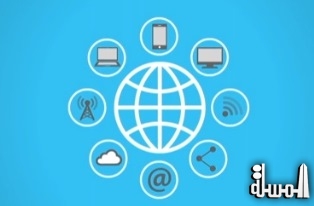
ITU releases annual global ICT data and ICT Development Index country rankings
Korea tops global ICT Development Index (IDI) for second straight year
aTP- Arab tourism portal News- Geneva, – ITU’s flagship annual Measuring the Information Society Report, released today, reports that the world is getting more and more connected and reveals that there are still huge investment opportunities for the private sector to connect the unconnected.
The Measuring the Information Society Report is widely recognized as the repository of the world’s most reliable and impartial global data and analysis on the state of global ICT development and is extensively relied upon by governments, international organizations, development banks and private sector analysts and investors worldwide.

"To bring more people online, it is important to focus on reducing overall socio-economic inequalities," said ITU Secretary-General Houlin Zhao. "Education and income levels are strong determinants of whether or not people use the Internet. ICTs will be essential in meeting each and every one of the 17 Sustainable Development Goals (SDGs), and this report plays an important role in the SDG process. Without measurement and reporting, we cannot track the progress being made and identify areas that require action, and this is why ITU gathers data and publishes this important report every year."
The Republic of Korea tops the IDI rankings in 2016 for the second consecutive year. The top 10 countries of the IDI 2016 also include two other economies in the Asia-Pacific region, and seven European countries. Three island countries in the Caribbean – St. Kitts and Nevis, Dominica, and Grenada – featured among the most dynamic countries with strong improvements in their IDI value and rank
"This year’s results show that nearly all of the 175 countries covered by the index improved their IDI values between 2015 and 2016," said Brahima Sanou, Director of ITU’s Telecommunication Development Bureau, which produces the report each year. "During the same period, stronger improvements have been made on ICT use than access, mainly as a result of strong growth in mobile-broadband uptake globally. This has allowed an increasing number of people, in particular from the developing world, to join the information society and benefit from the many services and applications provided through the Internet."
MEASURING MOBILE ADOPTION
Mobile phone adoption has largely been monitored based on mobile-cellular subscription data since these are widely available and regularly collected and disseminated by regulators and operators. At the end of 2016, there are almost as many mobile-cellular subscriptions as people on earth and 95% of the global population lives in an area that is covered by a mobile-cellular signal. However, since many people have multiple subscriptions or devices, other metrics need to be produced to accurately assess mobile uptake, such as the number of mobile phone users or mobile phone owners.

INTERNET POTENTIAL UNDERUSED
An increasingly ubiquitous, open, fast and content-rich Internet has changed the way many people live, communicate, and do business, delivering great benefits for people, governments, organizations and the private sector. However, many people are still not using the Internet, and many users do not fully benefit from its potential.
Most people have access to Internet services but many do not actually use them. The spread of 3G and 4G networks across the world make the Internet increasingly available to more and more people. In 2016, mobile-broadband networks covered 84% of the world’s population, yet with 47.1% Internet user penetration, the number of Internet users remain well below the number of people with network access. While infrastructure deployment is crucial, high prices and other barriers remain important challenges to getting more people to enter the digital world.
The full potential of the Internet remains untapped. Internet users with higher levels of education use more advanced services, such as e-commerce and online financial and government services to a higher degree than Internet users with lower levels of education and income levels, who predominantly use the Internet for communication and entertainment purposes. This suggests that many people are yet to benefit fully from the opportunities brought by the Internet.
Access to the Internet is not enough; policy-makers must address broader socio-economic inequalities and help people acquire the necessary skills to take full advantage of the Internet. This is in line with a more integrated development approach, like that adopted in the 2030 Agenda for Sustainable Development, which highlights that development challenges are linked and cannot be achieved in isolation.
Many people still do not own or use a mobile phone. Household data from developing countries show that a significant part of the population does not use mobile-cellular services at all. In developing economies where recent household data is available, close to 20% of the population, on average, are still not using a mobile phone. Most people who do not own or use a mobile phone are among the youngest (5-14 years old) and those more than 74 years old segments of the population. Usage and ownership penetration rates amongst these age groups are much lower than amongst the rest of the population. Among the 15-74 age group, 85% or more of the population owns or uses a mobile phone in the countries where data are available. But this is changing.
Progress in Least Developed Countries – Mobile-cellular prices continued to decrease in 2015, and the price drop was steeper than in previous years. For the first time, the average cost of the mobile-cellular basket (which includes 100 SMS and 30 mobile calls per month) in developing countries accounted for less than 5% of GNI per capita. Least Developed Countries (LDCs) saw a 20% fall in mobile-cellular prices, the strongest decrease in five years. The price drop is linked to the increasing availability of prepaid packages that bundle SMS and local calls.
Affordability is the main barrier to mobile-phone ownership. It is the cost of the handset, rather than the cost of the service itself, which is often reported as the main barrier to owning a mobile phone. Another important barrier is the lack of perceived benefits. In communities where overall mobile uptake is low, mobile phone use is perceived to have fewer benefits since fewer community members are also using this mode of communication. Other barriers include lack of ICT skills necessary for accessing the Internet through a mobile phone.
Asia and the Pacific has the lowest average purchasing power parity (PPP) $ price for mobile-cellular services of all regions. The region is home to countries with the lowest mobile-cellular price baskets worldwide: Sri Lanka and Bangladesh, where prices stand out at PPP$ 2.45 and PPP$ 4.14 per month.
Fixed-broadband prices continued to drop significantly in 2015 but remain high – and clearly unaffordable – in a number of LDCs. Globally, the price of a basic fixed-broadband connection has fallen from around USD 80 per month in 2008, to USD 25 in 2015, corresponding to a drop in the ratio of price to average GNI p.c. from over 90% to 14%. In LDCs, a fixed-broadband plan with a minimum of 1GB of data per month still corresponds to over 60% of GNI per capita.
Mobile-broadband is cheaper and more widely available than fixed-broadband, but still not deployed in the majority of LDCs. Globally, handset-based mobile-broadband prices have fallen from an average of PPP$ 29 per month in 2013 to PPP$ 18 in 2015. Mobile-broadband services are only offered in 38% of the LDCs; however, in those countries where the service is offered, handset-based prices have more than halved in PPP terms during the period 2012-2015 and prices now account for 11% of GNI per capita. Still, mobile-broadband cannot always replace fixed-broadband Internet access, especially the business sector and a growing number of applications require higher speeds and better connection quality.

REGIONAL COMPARISONS
Europe continues to lead the way in ICT development. It had the highest average IDI value among world regions (7.35). Countries in Europe generally have liberalised communications markets with high levels of ICT access, use and skills.
A number of countries in the Americas significantly improved their performance in the IDI. Several countries in Latin America, notably Bolivia and Mexico, also made noticeable progress in their IDI performance. Similar to other regions, the growth of mobile-broadband subscriptions was particularly influential on these outcomes.
The Commonwealth of Independent States (CIS) region is the most homogeneous in terms of ICT development. Nearly all countries in the CIS region have IDI values above the global average. All countries also improved their IDI values as a result of improvements in mobile-cellular and mobile-broadband penetration.
The Asia-Pacific region is, by contrast, the most heterogeneous. The top seven economies in the Asia-Pacific region have IDI values above 7.50 and rank within the highest quartile of IDI 2016. The region also includes a number of countries which significantly increased their IDI value and rank over the year, including Bhutan, Myanmar and Malaysia. However, nine out of 34 countries in the region, including several with large populations, are least connected countries (LCCs).
There is great diversity in ICT development across the Arab States. The five highest performing countries in the Arab States region are oil-rich high-income economies, but the region also includes a number of low-income countries, three of which are LCCs. This illustrates that the digital divide between the LCCs and the more prosperous countries in the region may be growing.
Africa is working on pushing up its IDI performance. The average IDI 2016 value for the Africa region was 2.48 points, just over half the global average of 4.94. The majority of the 39 African countries in IDI 2016 are LDCs. This reflects the lower level of economic development in the region, which inhibits ICT development. The highest growth achieved was in the number of mobile-cellular subscriptions, in contrast to other regions, in which the number of mobile-broadband subscriptions..
ITU’s Africa region does not include the North African Arab States.








